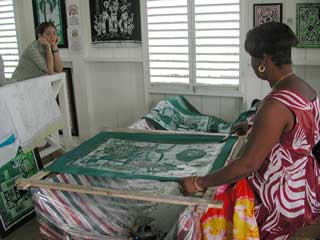
This is Kathy.
After breakfast we met our driver for the day, Mr. Mills. He enthusiastically welcomed us to St. Kitts. When he found out we were from the US, he gave us a beautiful rendition of "The Star Spangled Banner". So began today's adventure.
We had asked to go to Brimstone Hill and the batik factory. We didn't know this was going to be a tour around the whole island. We began with a drive back into Basseterr, where Mr. Mills pointed out the police station and prison. He joked that we did not want to visit there.
We also saw the government building and, later on, where the Prime Minister lived, which was in a town north of Basseterre. The Prime Minister is a medical doctor and wanted to live in this other town.
Mr. Mills also pointed out the approximate locations where Christopher Columbus landed in 1493 on his second voyage, and where Sir Thomas Warner landed in the early 1600s. Sir Thomas was the one who primarily colonized the island and many of the other islands in the area.
Then we went to Caribelle Batik at the old Romney Plantation. They have acres of fantastic gardens with all kinds of tropical plants such as bougainvillea, ginger and a 350 year old saman tree.
Once inside we were treated to a demonstration of the batik method of dyeing (top left). Starting with sea island cotton, a design is drawn on the material with pencil which does not disappear during the dyeing process.
Using a metal stylus that operates much like a large fountain pen, brushes, and a combination of melted beeswax and paraffin, the artist fills in all the areas that she wants to remain white. The cloth then goes through its first dyeing. After dying, the cloth is boiled for 30 minutes and the wax floats to the top where it is skimmed and reused. Then additional waxing is done, where wax is laid down in areas which should not receive the second dye color. The second dyeing is followed by boiling, etc. until the final layering of color is achieved.
The second and third pictures above show some of the products sold in the factory store. The fourth picture shows some red batik fabric being line dried between the steps at the edge of one of the gardens. The cotton fabrics tend to have intense, brilliant colors, while the silks tend to have muted, subdued colors.
I ended up with sensory overload trying to choose between all the different items. Mike and I have decided that we will have to go back again to pick up a few more things for gifts. Considering all the handwork that goes into each item, they are very reasonably priced. The wall hangings are works of art.
Note to Patria: My hair was worse today than yesterday. The wind never stopped blowing. I can thoroughly appreciate how you must hate the humidity.
After the batik factory, we headed to fort on Brimstone Hill which rises 750 feet and is called "The Gibraltar of the Western Hemisphere". A most impressive sight from a distance, even more so once you're there. The fort took over 105 years to construct using slave labor. It is a national park and historic sight still in the process of restoration. The only thing I've ever seen that comes anywhere close in historic terms is Alcatraz. It is called Brimstone Hill because of the sulfur fumes that used to escape from the nearby volcanic vents. The wind was so strong at the top of the hill that it nearly blew me over a few times.
Once we left Brimstone Hill, we continued on our clockwise tour of the island. Large areas are covered in sugar cane fields which are all owned by the government. In colonial times, each plantation would process its own sugar crop so each plantation had its own refinery. You can see ruins of these mills all along the highway that circles the island.
Now there is only one refinery for the whole island and it is located on the Atlantic side of the island near the airport. There are narrow gauge railroad tracks that cross the island to bring the cane to the refinery. The railroad crossings are different from those in the US. Instead of a gate coming down across the road, there is a gate that swings out from across the tracks to block the road. Sugar is harvested from February to May so the track are only used then. Right now they look rather overgrown.
Mr. Mills took us to the place where the Caribbean Sea meets the Atlantic Ocean on the north side of the island. Kind of strange! You could see the waves of the Atlantic moving to west while the waves of the Caribbean were moving south. Where they met appeared to be an almost permanent ridge in the ocean.
Right now we are waiting for dinner which is served about 7:30. Tonight's menu includes braised lamb shanks. Yummy! I love lamb! I will undoubtedly gain some weight on this trip. The food here is fantastic and irresistible.
Mike here.
Peter asked about the golf courses out here. The one on Nevis is rather posh, as I understand. They charge about $200 per person and you must rent a cart - you aren't allowed to walk the course. On Saint Kitts, the fees are only about $80 per person.
Geraldine asked about the people, houses, and the like here. One of the drivers here said that life was good out here, if you're willing to work. But, he said there are a few that do "bad things" and don't want to work. He didn't elaborate on just what those bad things were.
We noticed a large contingent of policemen in Basseterre. One of the shopkeepers said it was just because of Christmas time. They were just making their presence known. Some stores and delivery trucks even have policemen in them. Downtown Basseterre also had quite a few soldiers on the streets as well. But, I never felt like I had to worry about anything - there isn't a feeling like there's a bad part of the city or that anyone is menacing at all.
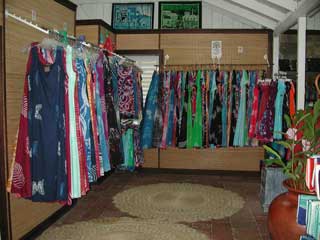
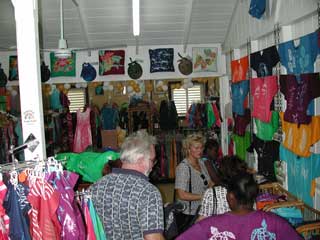
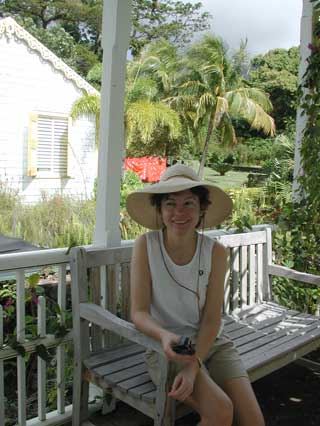
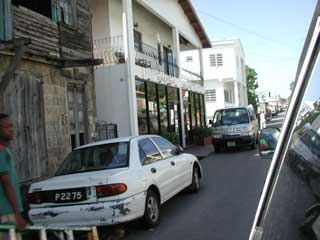
There was very little new construction that I saw. What I noticed most was that most of the houses seem to be composed of repairs on top of repairs. It's like they just stay ahead of entropy. I imagine that season upon season of hurricane has taken its toll, even though quite a few buildings are made of cinder blocks.
We did see some fairly new houses that were built by the government. Apparently the people in them just pay the mortgage to the government until the house is paid off, then it's theirs. The driver said that this was a very good thing. I asked what houses cost and he said that a four bedroom house probably cost about $400,000 EC (Eastern Caribbean dollars). That's about $150,000 US.
A lot of people are employed by the government sugar cane industry. They work year round, but I have no idea what they are all doing at this time of year. Perhaps they are inside working on equipment maintenance. I guess some cane is harvested by equipment and some by hand, and the hand harvesting is very hard work. I think the driver said that you get four years of crops from a cane field then you plow it under and replant it from cuttings.
The vast majority of people I see here are black and the accent is strong but mostly understandable. Everyone is very laid back. Even when the driver scolded kids for driving down the center of the road, they just pulled over and said, "Ok, man." No sass, no backtalk. Of course, every time we stopped during our tour today, there was a small tourist thing going on. One place was selling jewelry, several sold carvings from coconuts. One had kids about 8 or 9 years old selling sea shells. Even there, they began hawking as soon as we drove up and the driver told them, "Hey, mind your manners". They were then quiet until the driver later said, "Ok, now you can go." Then it was, "buy some conch shells sir? Only a dollar."